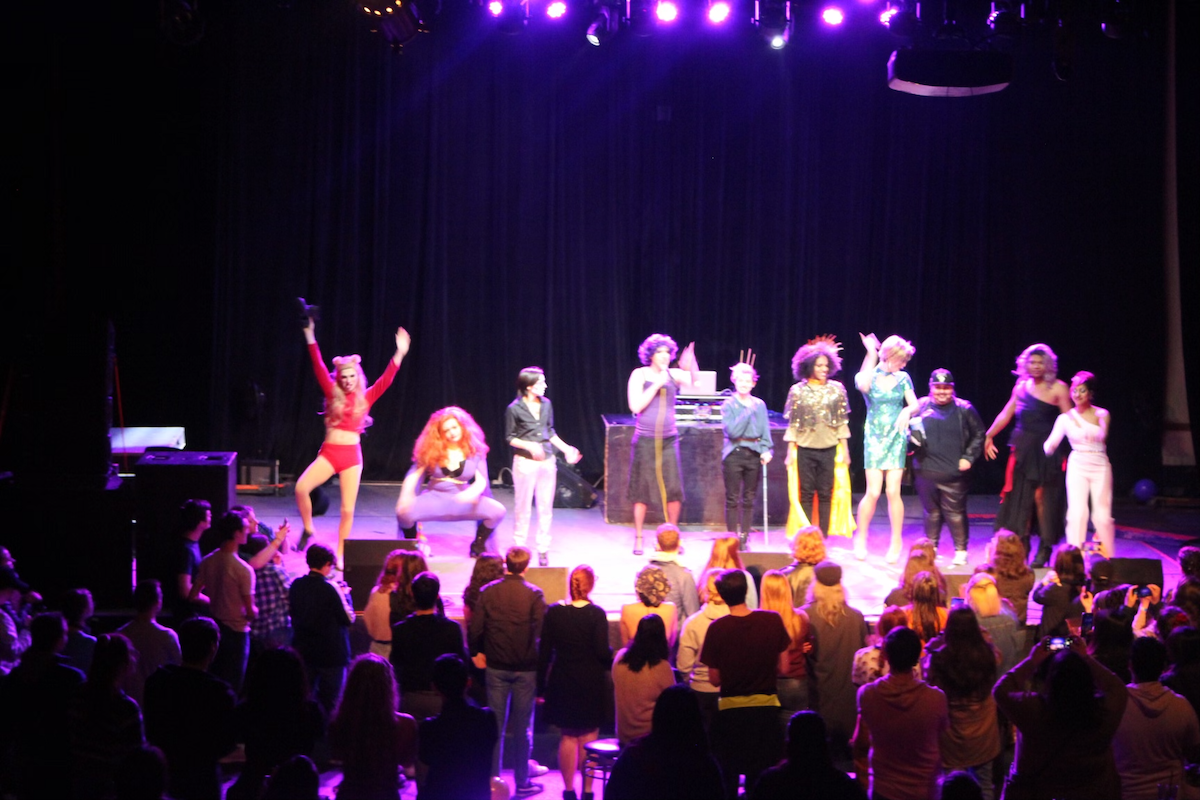Inspired by the ways in which COVID-19 has transformed what it means to learn and work in the performing arts, Performing Your Art in a Pandemic invites C-U performing arts students to share their experiences, be they frustrating, surprising, or inspiring. If you have suggestions, ideas, or feedback, feel free to contact us at arts@smilepolitely.com.
Trying to put on any sort of production online sort of feels like riding a bike without training wheels for the first time. You think it’s going to be the same, but just a little harder. But it’s not just harder. It’s a totally new experience. You have to learn a new way of balancing yourself, and locate a new source of momentum both internally and externally in order to move forward.
I never had the motivation to get over my fear of riding a bike (no, I still can’t). But other passions have stayed with me as I’ve gotten older. I have found theatre to be perhaps the most adaptable through all stages of my life- but also the most challenging to navigate. And the current global pandemic has certainly taken the training wheels clean off of my theatre training.
I am a senior undergraduate student in the University of Illinois Theatre Studies program. My degree requirements are flexible, so luckily I have for the most part been able to avoid taking any classes that would be difficult to take online. However, I spent a great deal of time last semester spread out on my bedroom floor trying to make miniature model pieces for a scenic technology unit in a theatrical design course. Recorded lectures with step-by-step instructions on theatrical design is a sort of contradiction in and of itself. Theatre is all about hands-on work. It’s about creating something with your own brain and body and putting that thing into a space for other people to experience. When you take away that space, the intended narrative of the work can easily fall flat. The process of developing the work can also be hindered by the lack of closeness you feel physically to your creations.

Photo by Claire Katz-Mariani
Watching a recorded theatre production or one via Zoom, while fulfilling in some ways, amplifies that lack of closeness. It also brings the focus of the audience, unintentionally and inevitably, to elements of a show that would usually blend seamlessly into the piece. Internet connection becomes an important issue. Auditory and visual effects must be perfectly executed to avoid massive moments of distraction. Pauses need to be carefully placed and omitted in order to account for the lack of laughs, gasps, and sobs that may be expected during a live performance. Actors need to adjust their mindsets. No longer are they living a character’s truth alongside an audience; they are only giving what the audience can take or leave. The connected experience of actor and audience member is lost.
Performing on a screen is also vastly different from performing on a stage (or on film, for that matter). Interacting with other performers who might not even be in the same room (or city) as you involves a great deal of active listening and emoting. If Zoom communication is causing burnout for people around the globe, the consequences can only be amplified for those in a career dependent on connection.
In my experience as a student leader for Illini Hillel’s fourth annual Purim Drag Show, I have known first-hand the highs and lows of putting together an online production. The obvious benefit is access. People all over the country will be able to access and watch the event. Live captioning will be available, and there won’t be any crowded venue with narrow doorways and a glaring absence of elevators. But making a drag show as festive online as it is naturally in person requires conscious and concerted effort. Email communication and follow-ups become particularly crucial, while artistic vision must constantly be reigned in by technological necessities.
The prospect of balancing and interrelating all of these newly formed priorities is daunting, to say the least. And the end result is not what we are used to desiring. But after eleven months of practice, I think I’m more than ready to take off the training wheels.








